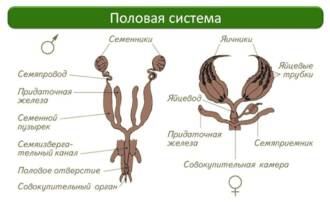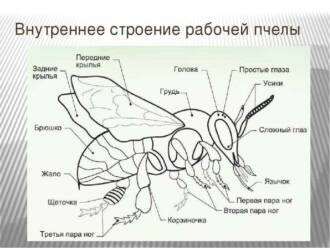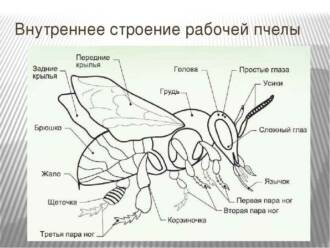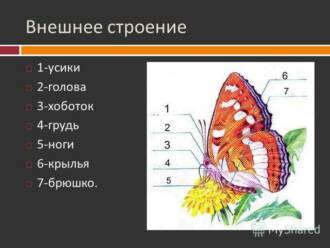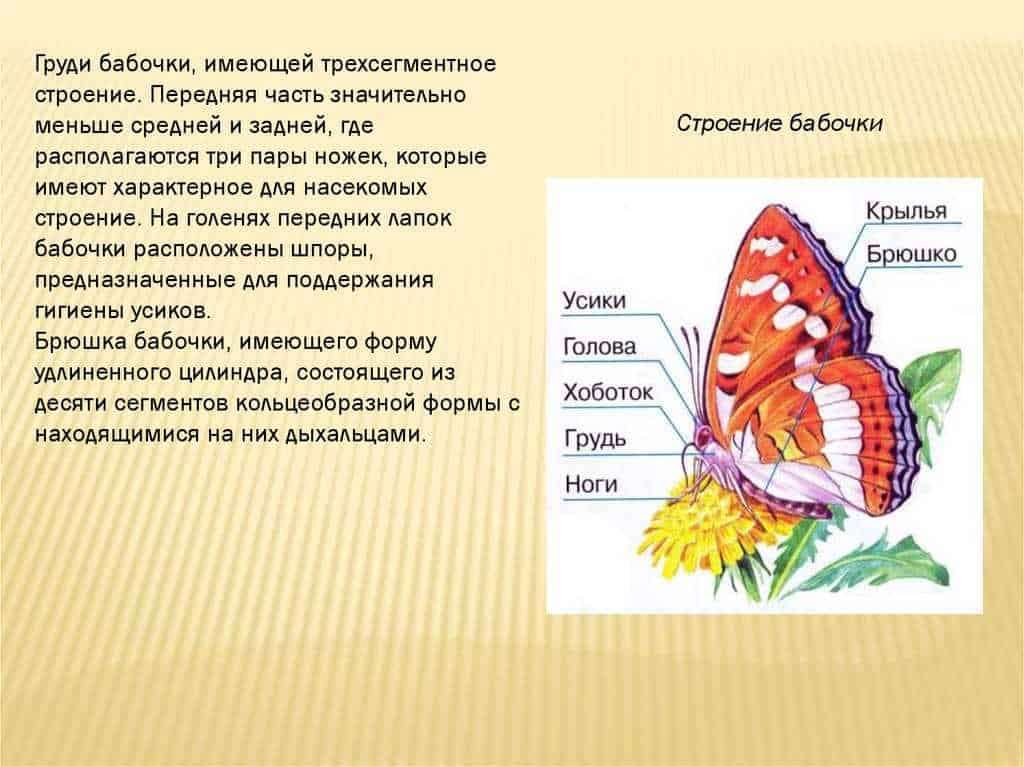
Butterfly wings are one of the most important parts of their body. They perform not only the function of flying, but also have a number of other important tasks. The structure of butterfly wings is unique and adapted to their lifestyle and ability to migrate over long distances.
Butterfly wings consist of two pairs, anterior and posterior. The forewings are usually larger than the hindwings and have a brighter coloration. Each wing has many small scales that give them their characteristic sheen. The scales on the wings of butterflies can have different shapes and colors, which makes them unique and helps to identify the species.
The functions of butterfly wings are very diverse. They serve not only for flight, but also perform a protective role. The bright color of the wings can serve as a signal to predators about the toxicity of the butterfly or its unsuitability for food. Wings may also be used to attract a mate during breeding and to mark territory.
Butterfly wings have a complex structure made up of strong veins that support their shape and provide strength. Some species of butterflies have transparent parts of their wings, which allows them to better hide against the background of vegetation. The wings also serve to regulate the butterfly's body temperature: in sunny weather, they unfold to get more heat, and in cool weather, they fold up to save it.
Butterfly wings structure
Butterfly wings have a complex structure that provides them with unique features and functions. Outwardly, the wings are thin and light plates covered with scales. These scales come in a variety of shapes and colors, giving butterflies a variety of colors and allowing them to deceive enemies or attract mates.
The structure of butterfly wings consists of several layers. The outer layer is the epicuticle, which protects the wings from damage and provides them with a smooth surface. Under the epicuticle is a layer of scaly cells, which are made up of a protein substance called keratin. These cells form scales, which give butterfly wings their special texture and color.
Butterfly wings contain a network of veins that provide rigidity and stability to the wings. The veins serve to transfer blood and nutrients throughout the wing area. They are also the basis for the attachment of muscles that allow butterflies to move and maneuver in the air.
An important feature of the structure of butterfly wings is their ability to self-repair. If a butterfly's wing is damaged, it can grow new scales and restore wing functionality. This ability allows butterflies to survive and continue their life cycle even under adverse conditions.
The external structure of the wing
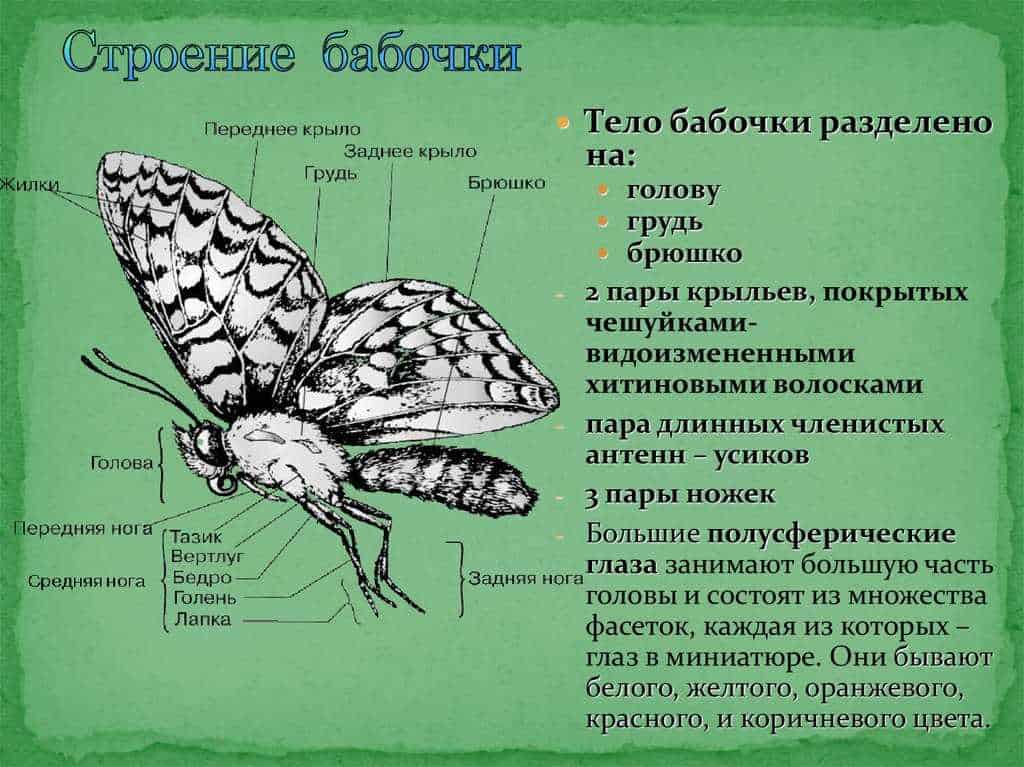
The butterfly wing consists of several main parts, each of which performs its own function. The main structural unit of the wing is the lamellar membrane, which is covered with thin scales. The scales give the butterfly's wing a beautiful color and unique pattern.
Wing scales can be of various shapes, sizes and colors. They may be smooth, rough, or grooved. This varied pattern on the butterfly's wing is its main defense mechanism. The scales serve as both protection from external influences and camouflage in front of predators.
The butterfly wing also has ribs that give it rigidity and strength. The ribs of the wing run along its entire length and serve as a support for the scales. They also help with the movement of the wing, providing it with flexibility and maneuverability.
One of the important components of the external structure of the wing are the veins. The veins of the wing are located between the ribs and are the vascular system that is responsible for nutrition and blood circulation in the wing. The veins also serve to strengthen the wing and maintain its shape.
The internal structure of the wing
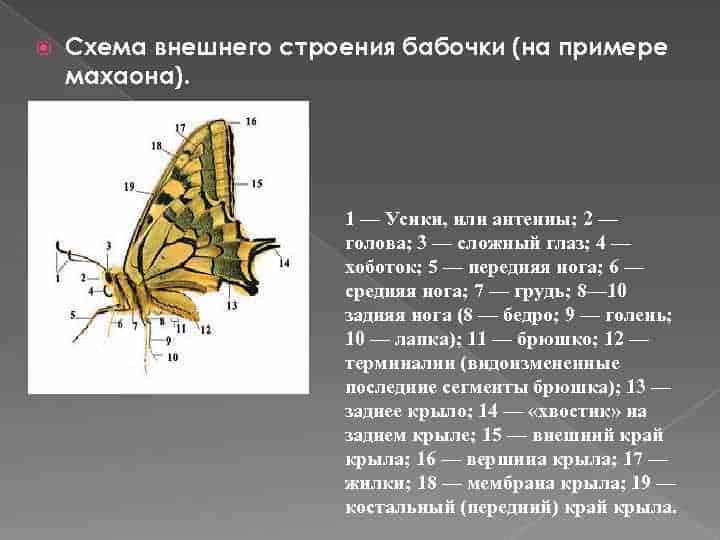
Butterfly wings are made up of several layers and structures that give them strength and functionality.
The main structure of the wing is the wing vein, which is made up of many small tubes called ribs. The ribs serve as a support system that maintains the shape of the wing and transmits the force generated by the muscles to it. They also serve as channels for the passage of blood and nerve impulses.
Between the ribs are membranes consisting of microscopic scales. The wing scales are made of a tough material called chitin and are attached to the ribs. They give the wing rigidity and protect it from damage. Each scale is shaped like a plate and overlaps with its neighbors, creating a beautiful mosaic pattern on the surface of the wing.
The wing muscles are also an important part of the internal structure of the wing. They are attached to the ribs and control the raising and lowering of the wing. Muscles are controlled by the nervous system and allow the butterfly to make flexible and precise movements in the air.
Thus, the internal structure of the butterfly wing is a complex system that provides its strength, flexibility and control over movements in the air.
Wings of their scales
Butterfly wings are made up of many small scales that give them brightness and beauty. The scales on butterfly wings are made of keratin, the same material that makes up our hair and nails. Each scale consists of a transparent base and a colored part that determines the color of the wings.
The scales on the wings of butterflies perform several functions. First, they protect the wings from damage and wear. The keratin that makes up the scales is a strong material that increases the strength of the wings and prevents them from breaking.
Secondly, the scales on the wings of butterflies serve for thermoregulation. Due to the many small scales, an air layer is formed on the surface of the wings, which helps the butterfly maintain optimal body temperature. In cold conditions, the scales on the wings of butterflies move closer to reduce heat loss, while in hot weather they move apart to provide ventilation and cooling.
Butterfly wings can also serve as protection and camouflage. Some species of butterflies have wings that mimic the color and texture of leaves or tree bark, which helps them hide from predators and become inconspicuous in the environment. Other types of butterflies have bright and attractive coloration that serves to attract mates during breeding.
The structure of the pterygoid veins

The butterfly wing consists of many pterygocal veins that perform important functions. Each vein is a thin and strong structure that runs the entire length of the wing and maintains its shape. Pterygocolic veins can be divided into several types depending on their position and function.
Principal structure
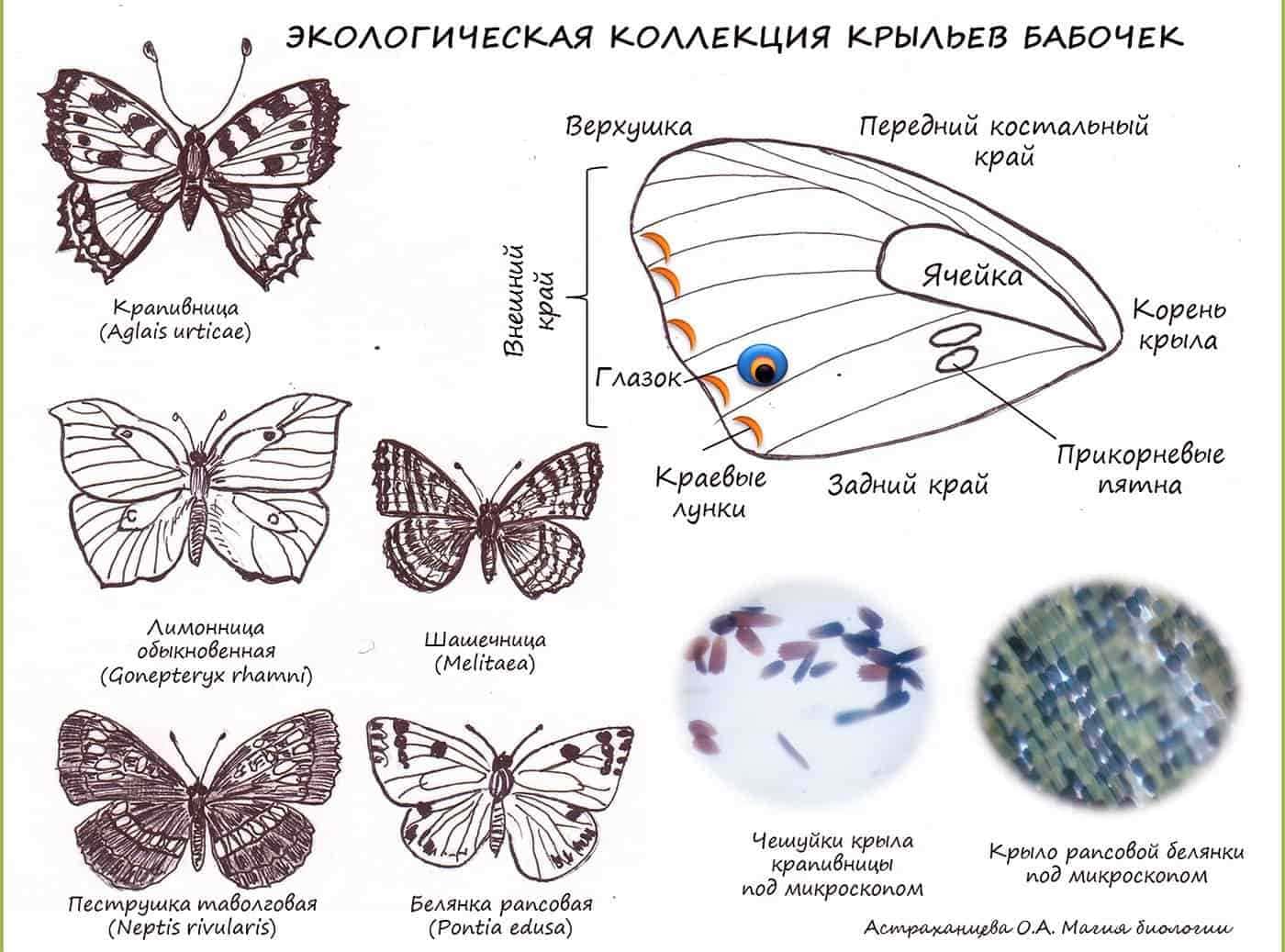
Each wing-line vein consists of two parts - the base and the branches. The base of the vein, called the veinlet, is located along the edge of the wing and serves to strengthen it. Branches extend from the base, which are located between the veinlets and create a complex network.
Functions of pterygoid veins
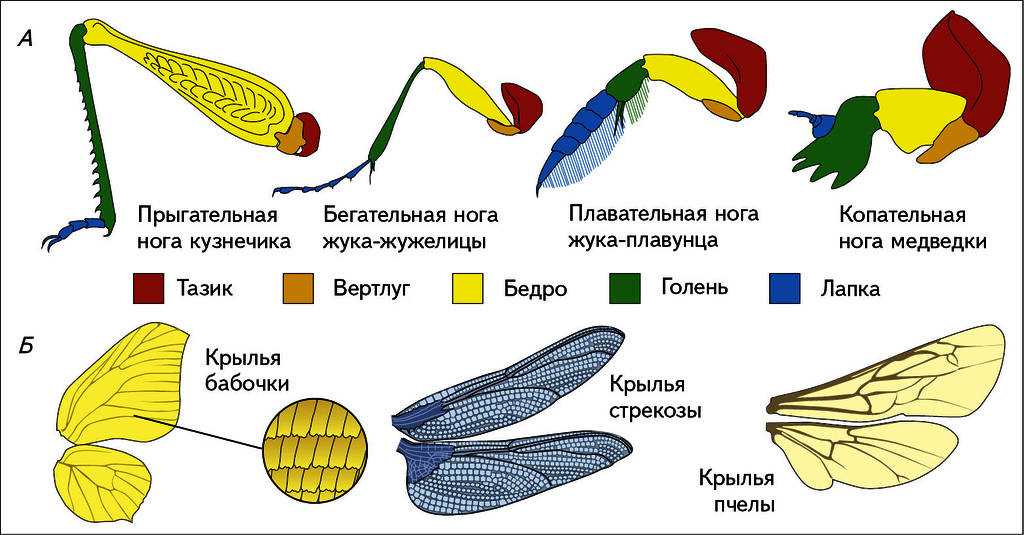
One of the main functions of the wing veins is to maintain the shape of the wing and prevent it from sagging. In addition, the veins participate in the movement of fluid along the wing and provide its strength and elasticity. Thanks to the complex network of veins, the wing becomes more rigid and resistant to the effects of wind and other external factors.
The pterygocolic veins also play an important role in the transmission of nerve impulses. They serve as conduits for the nerve fibers that control the movement of the wing and allow the butterfly to maneuver in the air. Thanks to this structure, the butterfly can easily change its direction of flight and maintain balance in the air.
Wing functions
Butterfly wings perform several important functions that help them survive and adapt to their environment.
1. Flight
The main function of wings is to provide flight. Butterfly wings have a light and flexible structure consisting of many delicate plates called scales. This building material makes the wings light and allows butterflies to maneuver in the air. The wings also have a certain shape that provides aerodynamic properties that allow butterflies to fly with high maneuverability and speed.
2. Protection


Butterfly wings also serve as protection. They serve as both visual and chemical defense against predators. Many species of butterflies have bright colors and patterns on their wings that serve as a signal to predators that they are poisonous or have an unpleasant taste. The wings can also serve to camouflage the butterflies in their environment so they can avoid detection by predators.
3. Heat preservation
Butterfly wings also perform the function of keeping warm. Some species of butterflies have special structures on their wings that allow them to retain heat. This is especially important for butterflies that live in cold climates. Wings help butterflies maintain their optimal body temperature, which allows them to actively move and search for food even during cold periods.
4. Communication and reproduction
Butterfly wings also play an important role in the process of communication and reproduction. Some species of butterflies have special patterns and colors on their wings that serve to attract a mate during mating. Wings can also be used to transmit chemical signals and pheromones that help butterflies find mates and determine their sex.
Variety of shapes and colors of wings
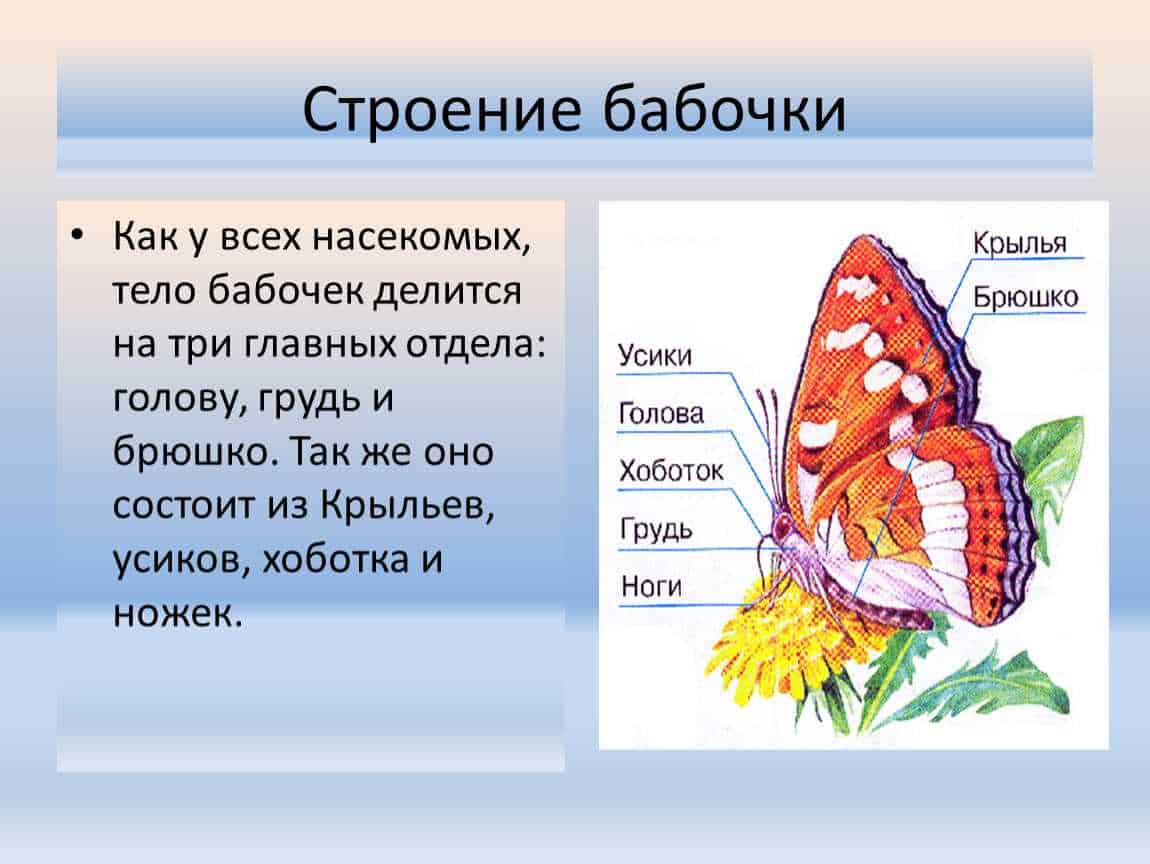
Butterfly wings are unique and colorful organs that are not only a means of transportation, but also a tool for attracting attention and protection. Each type of butterfly has a unique and specific shape and color of wings.
Some butterflies have large and wide wings that allow them to fly long distances and maintain their balance. Other types of butterflies have narrower and more pointed wings, which help them maneuver in the air and change direction quickly.
Butterfly wings coloring may be the most varied. From bright and saturated colors to delicate and pastel shades. The color of the wings of butterflies plays an important role in their life. It may be used to attract a mate during breeding, to intimidate predators, or to camouflage among the environment.
Some butterflies have bright spots or stripes on their wings that serve as a signal to a partner. They may also serve as a warning to predators of the toxicity or trouble these butterflies can cause. Other types of butterflies have coloring that allows them to blend in with their surroundings and be invisible to predators.
The meaning of wings in the life of butterflies
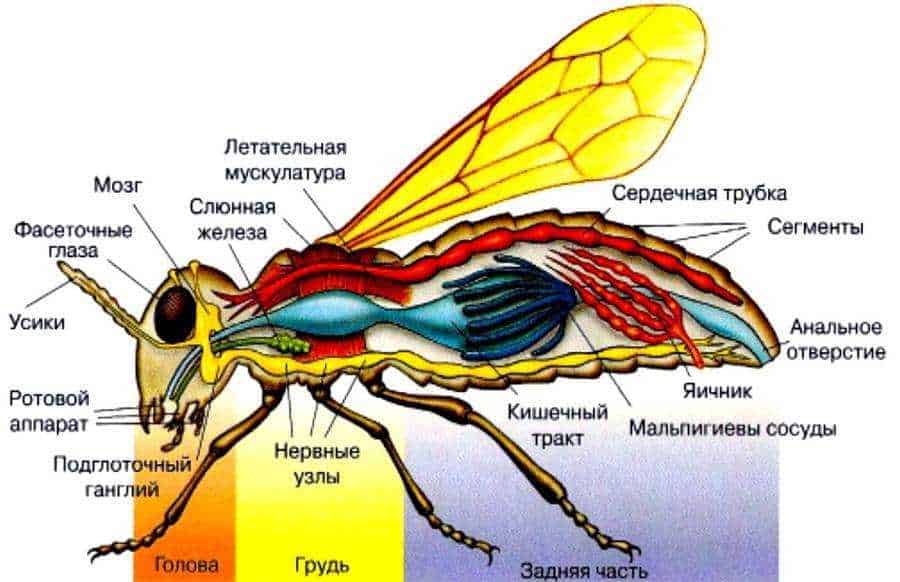
Wings play an important role in the life of butterflies. They not only allow them to fly, but also perform a number of other functions.
1. Flying

Wings are the main organ for flight in butterflies. They allow them to maneuver in the air, explore their environment, and find food and breeding partners. Due to their lightness and flexibility, wings allow butterflies to fly long distances and overcome obstacles.
2. Protection
The wings also act as protection for butterflies. They can serve as camouflage, helping butterflies to blend in with their surroundings and avoid enemies. Some species of butterflies have bright and colorful wings that serve as a signal to predators about their poisonousness or taste. Wings can also be used to scare off enemies with their jerky movement or the noise they make when they turn.
3. Social interaction
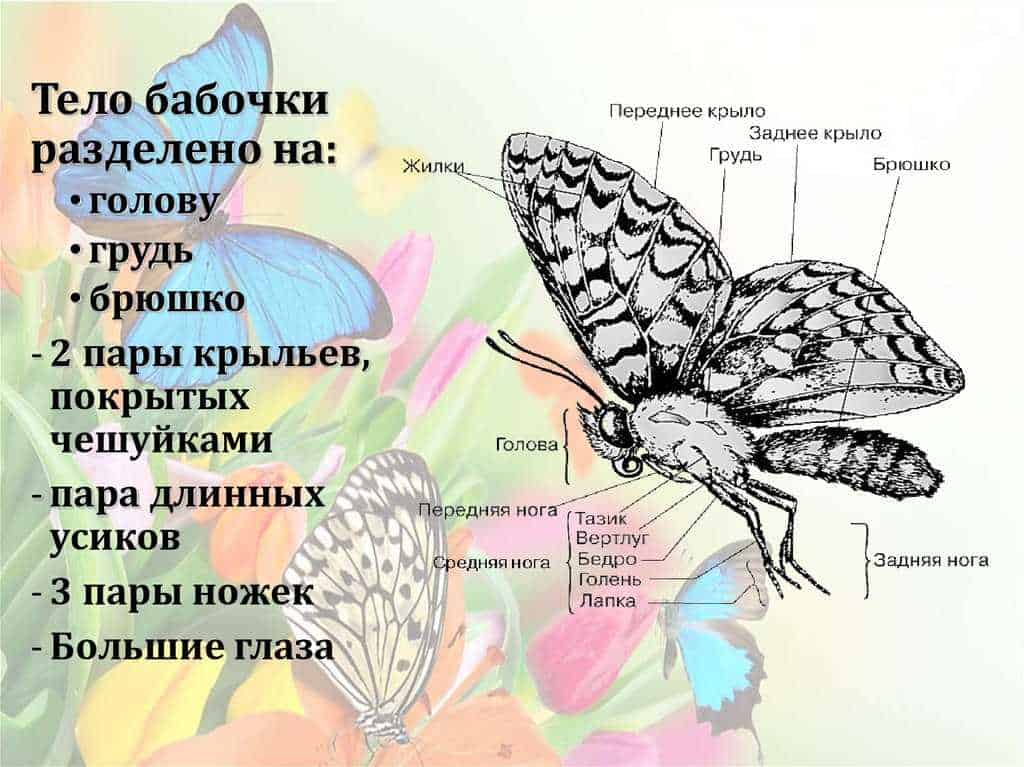
Wings also play a role in social interaction in butterflies. They can serve as signals to attract breeding partners. Some types of butterflies have wings with unique patterns or colors that help them attract the attention of the opposite sex. Wings can also be used to establish a hierarchy or territory within a butterfly population.
Thus, the wings of butterflies are of great importance in their lives, performing the functions of flying, protection and social interaction. They are the unique and beautiful organs that make butterflies such special and amazing creatures.


